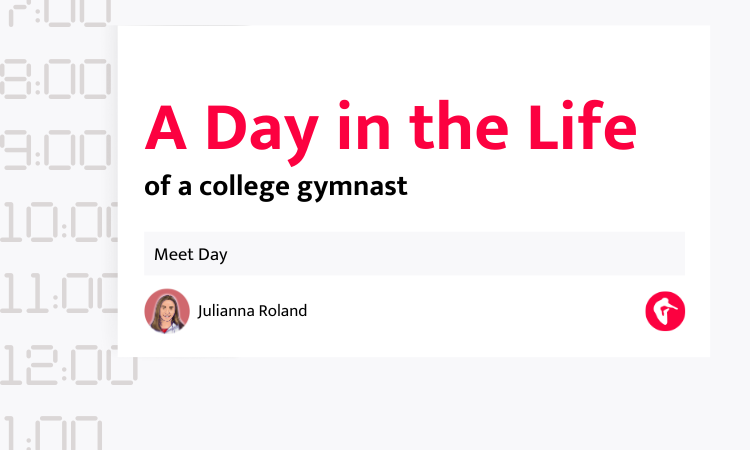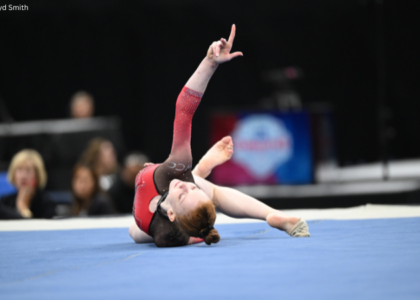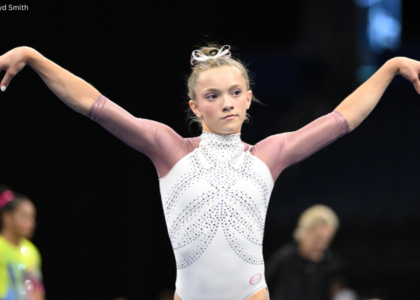It’s so hard to believe we are already more than a month into the 2024 season!
There have been so many highlights so far this year with the debut of new teams, the inaugural year of events and invitationals, and so many new faces in NCAA gymnastics. Going into week six of season, teams are starting to get more accustomed to competing week in and week out and are settling into a routine of what their typical meet days look like.
That being said, welcome back! I am so excited to share the experiences of not only myself but two others of what a day in the life of a meet day looks like! I had the opportunity to speak with two Kentucky athletes, fifth-year Raena Worley and freshman Delaynee Rodriguez about the events and emotions of meet day from the perspective of someone in their first year and someone in their final year. I share my own reflections on the journey.
In my last Day in the Life, I talked a little bit about what the build-up to the competition actually looks like, but for those who are just getting familiar with college gymnastics, here’s a more in-depth run down.
Whether you are competing in a home meet or traveling to an away competition, you usually arrive at the meet about three hours early; competition day is truly an all-day affair. The first hour is spent finishing getting ready, getting last-minute treatment, and getting taped to warm up. Different from club gymnastics, in college, warmups are before marching out, rather than warming up and competing right away. So, the next two hours are spent doing exactly this. The first 20 minutes is a team warmup, followed by a 15-minute warm-up on each event. What you do in this time depends on how much you need to be ready to compete. After going to each event, you have 20 minutes to get changed from the warmup to the competition leotard, do your team cheers, and get lined up to march out. From my own experience, this is when my nerves truly started to settle in, and everything started to feel a little more real.
The order you march out in depends on who the home or away team is, but being at home is definitely more fun. In my final year, my coach worked hard for our team to have an elaborate march out: the spotlight following us out when we got called, throwing shirts into the audience, and watching our introduction video up on our big screen. I had always wanted to do this type of march out like I had watched other teams get to do, and how big of a deal was made for home teams, so looking back, getting to experience this was really special.
After the national anthem is played, you get a two-minute transition to get ready for the first event. If it’s a dual meet, the home team starts on vault and the away team starts on bars, and you get a four-minute touch before the competition begins.
The lead-off plays a vital role in getting the team off to a strong start and building the confidence for the rest of the lineup. Rodriguez, a freshman for Kentucky, who is the lead-off on all four events, shares her insight on being the first one to compete each time out. “I try to be loose before I go; not really focusing too much on the routine or the event, but taking it in, and being carefree and calm,” said Rodriguez. “I just tell myself it’s like any other day, it’s skills I’ve been doing for years.” For Rodriguez going first means less time to be nervous or let the competition jitters get to her and more time to cheer on her teammates after she competes.
On the opposite side of the spectrum, Worley has been anchoring, or going last in the lineups, for most of her career at Kentucky. Each person in the lineup is incredibly important, but this last person up is in one of the more difficult positions. “I like the role a lot. I like to watch the team build… [to] watch each person go through the lineup and how it comes together into something special,” said Worley.
After this first event, the jitters start to settle, and the nervous energy starts to turn into excitement. Aside from the excitement the gymnasts are feeling, they are also getting so much energy from the crowd, which undoubtedly, is one of the best parts of meet day. Competing in front of so many people is incredibly exciting, but it’s also something difficult to get used to for someone who might not have experience in this type of environment before.
“I love the bigger environments,” Worley shared. “One thing our team does really well is we take advantage of the environment we are in. … We work really well in taking that energy and turning it into excitement of our own, and we really flourish from that throughout the meet.” She is exactly right; if you find a way to use the energy for good, competing with this type of energy is truly a one-of-a-kind experience.
Looking back on meet day, my favorite event to compete was floor, which I think is the case for a lot of NCAA gymnasts. Both Worley and Rodriguez share this sentiment. “(Competing floor) is definitely my favorite,” said Rodriguez. “(On the other events) you can’t really see your teammates and the crowd cheering for you, but with the floor, you get to see this, and (experience it).”
One of my most cherished memories would be competing my final floor routine on senior day at home for exactly this reason; being able to look at my teammates before my last pass cheering for me and look at the crowd and get to soak in these memories and share such special moments with all the people who wanted that success for me.
When meet days are all over, looking back, you might remember the scores and remember who won the meet, but, mostly you remember the little moments outside of the actual gymnastics and the time you were able to share with the people around you. You put in so much work to be able to get to this point and actually be in the lineup, and being able to watch your teammates succeed is truly as exciting as being able to compete. As you get to the end of your time on the team, even though you are still competing, you realize your role extends beyond gymnastics.
Worley, although a contributor on each event, shares her favorite part of meet day is this, and being able to take on this extra role in her final year in the NCAA. “I love giving the little talks to people before they go,” Worley said. “You never really know what’s being said, you just get to watch them go. But, when you’re the person saying it, you get to speak so much confidence into them.”
Being able to have this confidence in one another and trust each person that goes up is what you work for as a group all year. There is so much more that goes into meet day besides the actual couple of minutes you get to compete. These days are definitely long, tiring, and emotional, but most of all, so worth it after all you put in as a group and individually to get to this point.
READ THIS NEXT: A Day in the Life of a College Gymnast: First Meet Jitters
Article by Julianna Roland





6 comments